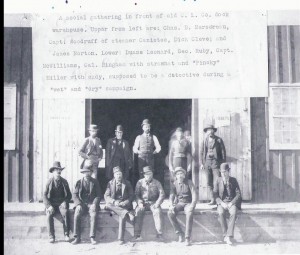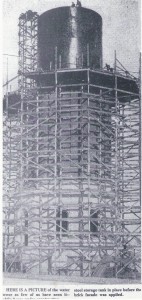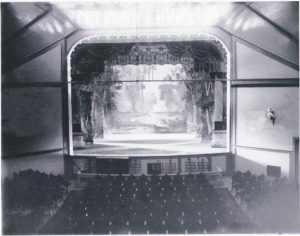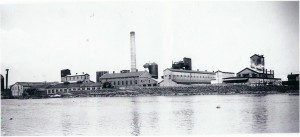
The Chicago Lumber Company started around 1865 by two gentlemen by the names of Mr. Spinney and Mr. Boyd. Through the many years the Chicago Lumber Company owned most of Schoolcraft County and is responsible for the major development of Epsport (Manistique). During this time they started the Chicago Lumber Company Store. A social gathering in front of the old C. L. Co. dock warehouse. Upper from left are: Chas. B. Mersereau, Capt. Woodruff of Steamer Canisteo, Dick Cleve, and James Norton. Lower: Duane Leonard, Geo. Ruby, Capt. McWilliams, Cal Bingham with straw-hat, and “Pincky” Miller with cady, supposed to be a detective during a ‘wet” and “dry” campaign.
When the Chicago Lumber Company came to Manistique in 1872, they owned all of the town area except one residence. Their goal was to keep the town “dry”. Any property leased or later sold had a convenant attached to it saying that the premises could not manufacture, store or sell intoxicating liquors.
The residence referred to above was owned by Alex Richards. The location was bounded by Pearl Street, Water Street, and Maine Street, forming the a flatiron shape. The only liquor available was through whiskey boats that would anchor offshore. The whiskey sellers were finally arrested as a result of selling their goods to the Indians. In the 1880’s, Daniel Heffron from New York saw great opportunity in Manistique as a saloon-keeper. He found Richards, bought his property and built his saloon. Read More...




